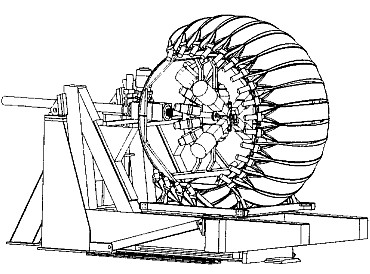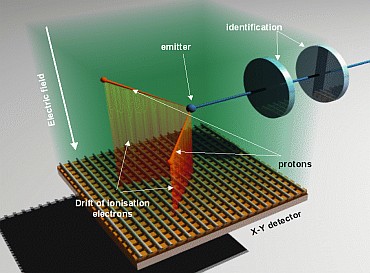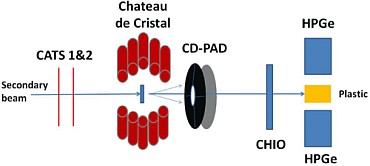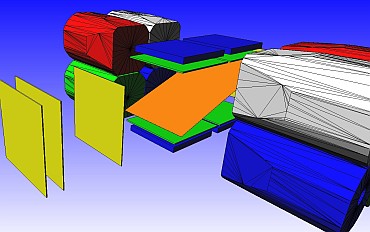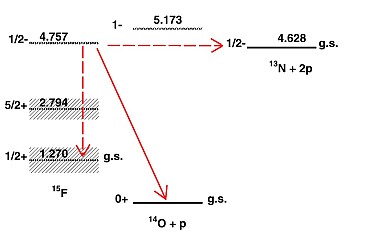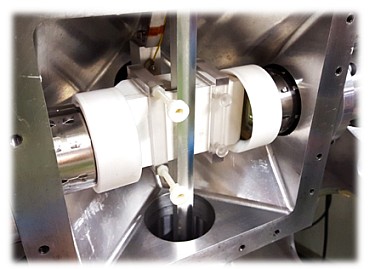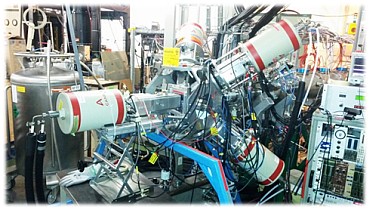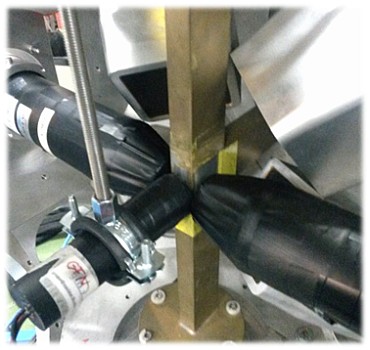The ISOLDE Decay Station experimental setup
Contact persons: Razvan LICA, Constantin MIHAI
The IFIN-HH team contributes actively to the ISOLDE facility, namely the construction of the ISOLDE Decay station (IDS) with a large
Romanian contribution in equipment, manpower and expertize. Following the successful commissioning in August 2014 several experiments
were performed and already from the online analysis it becomes clear that these experiments are expected to lead to valuable physics
results.
The detection system of IDS is very versatile, with a core of four germanium clusters (HPGe) used for gamma detection. Four different setups can be provided depending on the case under study and physics aim:
high efficiency beta-gamma spectroscopy
neutron time-of-flight spectroscopy
charged particles spectroscopy using Si detectors
beta-decay fast-timing studies using LaBr3(Ce) detectors.
The different experimental configurations are shown on the picture below.
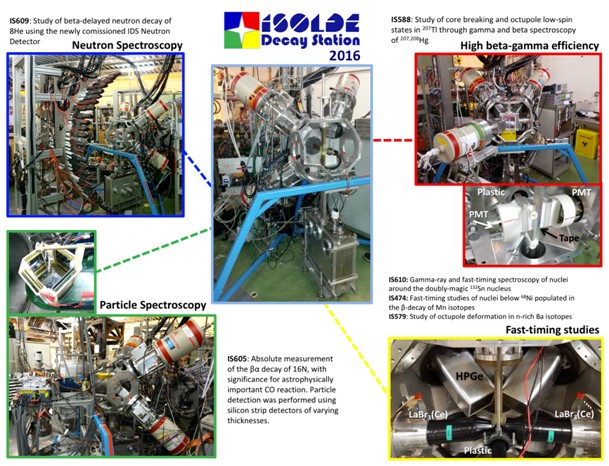
IDS configurations. Each configuration has been used for several experiments over past years. The experiments performed during the 2016 campaign are indicated beside their respective configuration.
Except the "charged particles spectroscopy" for which the beam is implanted within a thin carbon foil, all the configurations are
compatible with a tape system. The beam of interest is implanted within a tape. In order to improve the signal/noise ratio and measure
the short lived components the tape can be moved away from the detection setup.

